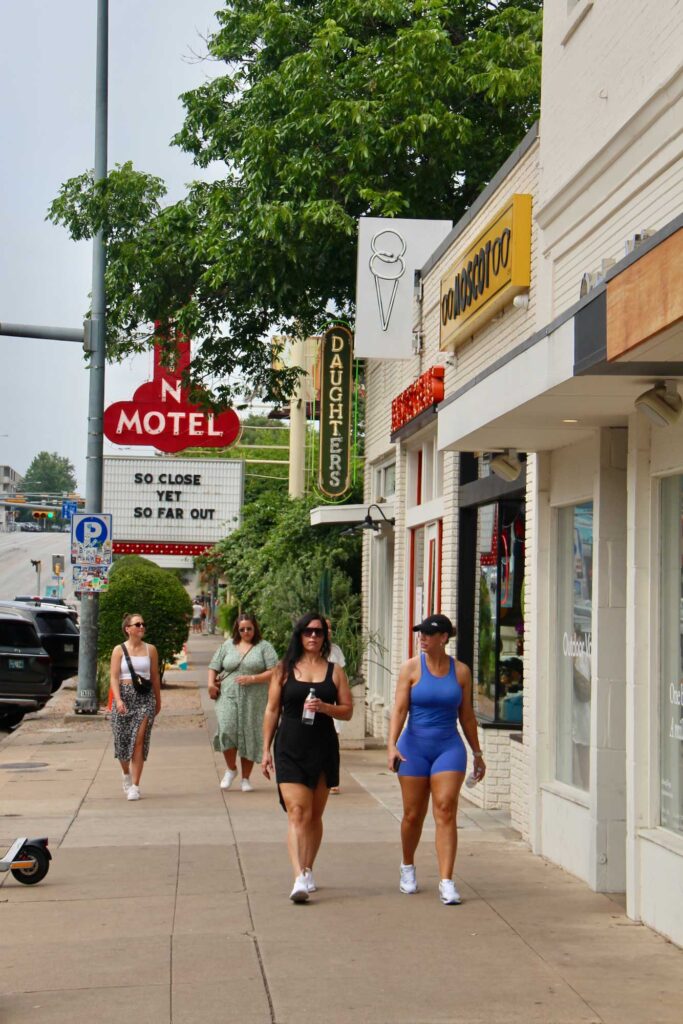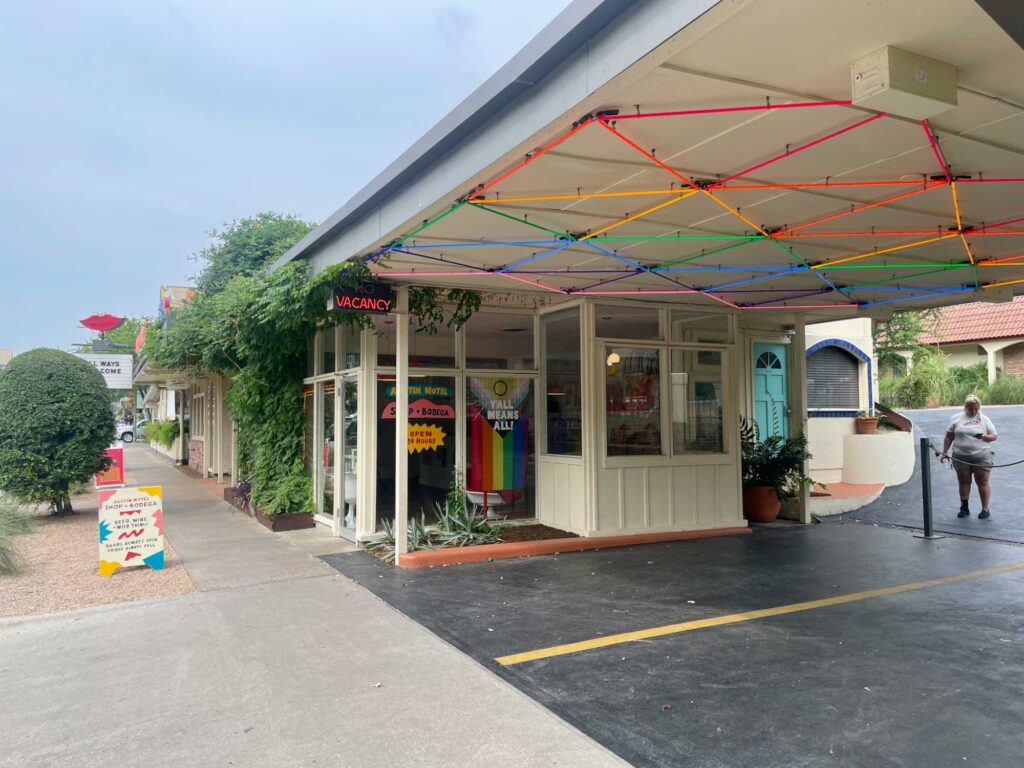- Built:
- 1852
- Alterations:
- 1930-present
- Style:
- Multiple
Description
South Congress Avenue is a key part of the city’s “Keep Austin Weird” reputation. Dozens of popular businesses call South Congress home, attracting locals and tourists alike. Sometimes referred to as SoCo, South Congress is a place where everyone can enjoy live music, regional foods, and unique shopping.
Placemaking
Unlike Congress Avenue’s early establishment in 1839, South Congress Avenue developed much later in Austin’s history. South Congress began as a rural postal route connecting Austin to San Antonio in the 1850s. Ferries were used to transport people across the river until the first wooden bridge was built in 1877. The oldest buildings along South Congress include the Eck Dry Goods Building (1888), the J.M. Crawford Building (1887)—home to Guero’s Taco Bar—and several landmark homesteads.
Growth in South Austin did not truly emerge until after 1910, when the concrete Congress Avenue Bridge was built and the city’s streetcar system provided additional means of transportation. New buildings along South Congress consisted of simple one- and two-story stone or brick structures with awnings. The street began to host grocery stores, bakeries, blacksmiths, and livery stables. By the 1920s, several new businesses had popped up on South Congress, including gas stations, motels, and restaurants.
The paving of South Congress in 1930 helped shape the corridor into a main thoroughfare. Sites related to this time period include The Herb Bar (1925), Fire Station No. 6 (1932), San Jose Court/Hotel San Jose (1936), C-Boys Heart & Soul (1937), and Austin Motel (1938). The importance of South Congress as a regional highway was highlighted by the amount of tourist businesses it supported in the 1950s. South Congress hosted 21 motels/motor courts, 14 restaurants, a dozen gas stations, and numerous grocery and building material stores between the river and Ben White Boulevard.
Change quickly came to South Congress when Interstate Highway 35 was constructed in 1962. Businesses relocated along I-35, buildings fell into disrepair, and the area experienced dramatic change. In the late 1960s and 1970s, musicians and artists settled in and opened The Continental Club, the Austin Opry House, and Armadillo World Headquarters (nearby on Riverside Drive). But many other businesses abandoned the area, and by the 1980s South Congress had developed a reputation as a rundown, seedy part of town. It was not until the late 1990s that South Congress regained its strength as a destination. Rehabilitated buildings and local businesses flourished, attracting a diverse crowd throughout the 2000s.
Today, South Congress is again experiencing dramatic upheaval. A number of locally owned boutiques and restaurants were bulldozed to create Music Lane, a collection of multi-story buildings filled with upscale national brands. Many of the district’s historic buildings remain unprotected, and several beloved and colorful mom-and-pop businesses—Uncommon Objects, Tesoros, Lucy In Disguise, and (ironically) South Congress Books—have been pushed out of the area due to rising rents and property taxes while luxury brands like Hermès have taken their place. The west side of SoCo between Milton and Annie streets has retained much of its early-2000s character and charm, but the district’s lack of historic protections means an uncertain future for the small businesses occupying this unique enclave. For now, South Congress continues to be the place to see iconic murals, shop for boots, grab coffee, catch a live music show, or eat at one of many legacy restaurants. Only time will tell what comes next for the southern stretch of Austin’s main street. – JuanRaymon Rubio, Assoc. AIA
Bud Franck









